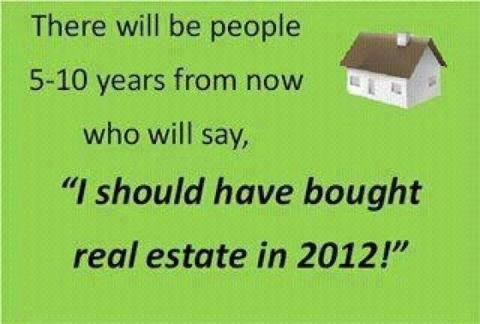I am very excited to announce my new website and blog: SusanTalarico.com. The contents of this blog have been moved to the new site. Please stop by, and be sure to bookmark the new location.
Archive for the ‘Uncategorized’ Category
Announcing The New Susan Talarico Website
Posted in Uncategorized on January 12, 2013| Leave a Comment »
How to Get Kids to Save Energy
Posted in Arizona life, real estate information, scottsdale real estate, Uncategorized, tagged energy efficency, energy savings, green, green homes, green living, household tips, save money on January 3, 2013|
 By: Courtney Craig
By: Courtney Craig
Published: August 29, 2012
Want your kids to pitch in and help save energy? Green parenting bloggers weigh in on getting kids to flip the switch and stop wasting energy.
Kids have more important things to think about than turning off the lights. But discovering the lights blazing in an empty room for the umpteenth time is enough to make any parent scream, especially when the power bill arrives.
The good news is, you can train your kids about the importance of saving energy right from the start. Here’s great advice from some of our favorite bloggers who know a thing or three about kids.
1. Let them take charge.
Jenn Savedge, who blogs at The Green Parent, practices a little reverse psychology — she urges her kids to remind her to turn off the lights.
“They get such a kick out of ‘telling Mommy what to do’ that it’s first and foremost on their minds,” Savedge said. “If I walk out of a room without doing it, they’re happy to point it out and then dash back and do it for me.
“Works like a charm and keeps the whole thing from becoming just one more thing that Mommy nags them about.”
The key to getting children to do anything is to make it “theirs,” says Monica Fraser, a mother of two who blogs at Healthy Green Moms.
“I get them to police me because they get inspired to turn off the lights ‘better than me,’” she said.
2. Find their motivation.
For Sommer Poquette’s 8-year-old son, it’s money.
“If I have to ask more than three times for my son to do anything in particular, he loses $1 out of his piggy bank,” says Poquette, who blogs at Green and Clean Mom.
“I do this so he learns that leaving the lights on costs me money, but also because he’s very motivated to earn money and spend money, so I hit him where it hurts the most: the wallet! Amazingly, he listens very well and never lets me get to the fourth ask!”
Fraser’s kids are motivated by the idea of helping out friends and neighbors.
“Because my children are quite young, I have said that we must remember to turn lights off and shut water off when brushing so that our neighbors have enough,” she says. “They know their neighbors, and certainly wouldn’t want to use all the water.”
3. Incorporate non-verbal reminders.
Gentle reminders, such as stickers on the light switches, help kids remember to turn off the lights when they leave a room.
“They’re each in charge of shutting off their bedroom lights each morning and during the day,” Poquette says. “We have stickers above the light switches to remind them. As a family, we all offer each other friendly reminders.”
Sticky notes don’t just apply to light switches, either. Tiffany Washko, who blogs at NatureMoms, places Post-It Notes labeled “Turn Me Off” and “Unplug Me” all around the house as reminders.
“Putting them by the light switch, on the side of the TV, on the wall next to the power bar that controls game consoles, etcetera, is a great visual reminder,” Washko says.
“We also require each child to do a walk-through each morning before they leave for school and turn off anything that may have been left on. Once they consistently remember, we stop requiring it … that is, until they have a few lapses, then we rinse and repeat.”
4. Explain to them why it’s important.
The full implications of saving energy may not immediately be clear to kids, but they’ll be more likely to remember to turn off the lights if they understand why it’s important.
“To teach them about the importance of turning off the lights and saving energy, we’ve read them several children’s books,” says Poquette. “My son understands the value of a dollar, so I’ve shown him our energy bill and explained to him what this means and how energy is produced.
“I think being up front with your kids, and explaining things to them in simple ways they can understand, is the best policy.”
How do you get your kids to turn off the lights when they leave a room?
Woulda, Coulda, Shoulda!
Posted in Uncategorized on September 19, 2012|
5 Foreclosure Myths for 2012
Posted in Uncategorized on March 19, 2012|
There is a lot of “urban legend” circulating when it comes to foreclosures and the current state of the real estate market. The steals and deals are gone, but you can still get a great buy an on a good home. Here are some important things to be aware of in the foreclosure market
LED Holiday Lights: 6 Need-to-Know Tips
Posted in Arizona life, real estate information, Real estate trends, Uncategorized, tagged energy savings, green homes, holiday decor, holiday lights, real estate news on November 27, 2011| Leave a Comment »
Are You Unknowingly Violating Arizona Traffic Law?
Posted in Arizona life, Cars, service, Uncategorized, tagged Arizona life on August 17, 2010| Leave a Comment »
As I drive around the wonderful Valley of the Sun in our 110 degree summer days, I have noticed that many drivers may not be aware of a law that was passed almost 2 years ago.
As of January 1, 2009 Arizona requires that an Arizona license plate on a vehicle must be clearly visible, and that the word “Arizona” at the top of the plate may not be covered.
The wording of A.R.S. 28-2354 is:
State law, ARS 28-2354(C), requires that the state name at the top of Arizona license plates must be visible. Any license plate holder or cover that prevents the license plate from being clearly legible, is in violation of this new law.
If you have a license plate frame on your vehicle that covers the word “Arizona” you are advised to remove it. There is a good chance you have a car dealer frame around you plate that you just never paid attention to and it covers the word “Arizona”. This frame most likely has been on your car prior to January 2009. The fine, depending on where you get pulled over, could be $150 or more.
Of course if you are doing something else you should not be doing, such as driving after a few cocktails, and you have one of these license plate frames you have now added an additional expense and problem to your error.
So, take a minute to walk out to your car and check your license plate. You just may want to take a screwdriver. It the word “Arizona” is at all obstructed, I would suggest putting the screwdriver to work.
Where Have all the “real” Realtors gone?
Posted in real estate market conditions, real estate negotiation, service, Uncategorized, tagged Full service Realtor, negotiation, service on September 21, 2009| Leave a Comment »
Whatever happened to the full service Realtor? There are so many discount Realtors, offering discount service that the true full service Realtor has been facing extinction. In this challenging market, can you really afford a discount Realtor or to be a discount Realtor? Fortunately both the consumer and these part-time, sometimes, discount Realtors are now becoming a dying breed. They both realize this model does not bide well in today’s marketplace. Personal attention has become important again.
That being said, I come back to my original question… “What ever happened to the true full service Realtor? Some of you may be saying, “I am right here” or “My Realtor is full service.” Can this really be true? When was the last time your Realtor (or you) presented an offer in person? Of course the large number of short sales and bank owned properties make this near impossible, but on a conventional sale does your Realtor (or you) present in person? Fax machines, e-mail, Blackberry, text messaging, e-Fax…does anyone ever talk to anyone anymore. Does anyone meet with the Seller and Seller’s agent face to face to “make the deal work”? As a Realtor that learned to present in person whenever possible, I still continue that practice. Unfortunately, I find it more difficult to follow that practice as the Seller’s agent does not find it necessary to represent the best interests of their client and meet face to face. I can think of several deals that have been “saved” by being personable and working with a person, not a piece of paper. Details can be explained and worked through instead of fought through. Everyone starts on the same page, therefore the entire negotiation moves more quickly and productively. All parties realize that everyone is after the same goal, a fair deal for all.
The electronic age has definitely created a shift in the way we conduct business, but we do not need to depersonalize it. I find it disheartening how so much of the younger generation cannot leave a proper voice message. Forget written communication, unless of course it is a text- message full of text lingo. The only way they know how to convey the use of humor is with a “LOL” or emoticon. People skills, presentation skills and just plain talking to people have become a dying art. Real estate is not sales, it is a people business. Once you lose the ability to relate to a person and build lasting relationships, you lose the ability to build and grown your business.
As you make the “shift” in today’s world and use all this wonderful technology, social networking and short cut communication, remember to “keep it real”. Talk to your clients, fellow Realtors and anyone else you want to build a relationship with. Pick up the phone and make a lunch or coffee date with that past client. What about that colleague you think of often but haven’t seen in awhile. Do that once a week and watch your business bloom. After all, real estate is a conversation. Let’s talk.





